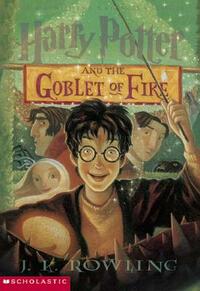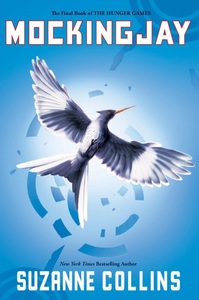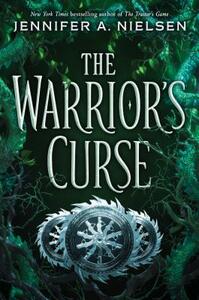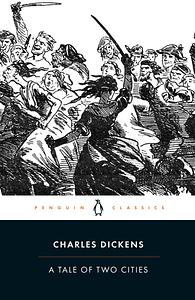Take a photo of a barcode or cover
writesypratsyy's Reviews (217)
adventurous
emotional
funny
informative
lighthearted
mysterious
fast-paced
Plot or Character Driven:
A mix
Strong character development:
Yes
Loveable characters:
Yes
Diverse cast of characters:
Yes
Flaws of characters a main focus:
Complicated
adventurous
dark
funny
lighthearted
mysterious
tense
slow-paced
Plot or Character Driven:
Plot
Strong character development:
Complicated
Loveable characters:
Complicated
Diverse cast of characters:
Complicated
Flaws of characters a main focus:
Complicated
adventurous
challenging
dark
emotional
funny
mysterious
sad
tense
fast-paced
Plot or Character Driven:
A mix
Strong character development:
Yes
Loveable characters:
Yes
Diverse cast of characters:
Yes
Flaws of characters a main focus:
Yes
adventurous
dark
emotional
funny
mysterious
tense
fast-paced
Plot or Character Driven:
A mix
Strong character development:
Yes
Loveable characters:
Yes
Diverse cast of characters:
Yes
Flaws of characters a main focus:
Complicated
adventurous
challenging
funny
lighthearted
relaxing
medium-paced
Plot or Character Driven:
Plot
Strong character development:
No
Loveable characters:
Complicated
Diverse cast of characters:
N/A
Flaws of characters a main focus:
Complicated
adventurous
dark
emotional
hopeful
informative
inspiring
reflective
sad
tense
medium-paced
Plot or Character Driven:
Plot
Strong character development:
Yes
Loveable characters:
Yes
Diverse cast of characters:
No
Flaws of characters a main focus:
No
"It was the best of times, it was the worst of times,"
A Tale of Two Cities by Charles Dickens starts with showing us two paths, 'the best of times' and 'the worst of times'. This story hugely focuses on the concept of death and life, of redemption and resurrection. Taking place in two cites; Paris and London at a time when the people were living under the kings like petty insects with a thirst for revenge rising in their midst. Dark secrets brewing behind the rising blood of the French Revolution, we get an in depth view of the state of the common innocent people who got stuck in between this bloodbath.
The story opens by describing the situations in France and England as Mr. Jarvis Lorry, a respectable banker of the Tellson's Bank, a businessman through and through is on his way from London to Dover where nobody trusts anybody. They are stopped by a messenger looking for Mr. Lorry, who returns the message he received by sending his own, "Recalled to Life" And thus, the idea of resurrection began.
This tale doesn't just draws us in the lives of these characters which have been woven and knitted so delicately it also gives us an understanding on the human nature. It shows us how the thirst for revenge can turn into the reason why the revenge was seeked. Madame Defarge, a very important character in this book is shown to be silently knitting all the time, but keenly hears and sees everything happening around her. The knitting she does is a very important aspect of the story. Dickens tries to throw this back to the Fates in the Greek Mythology, where the three fates knit the fates of people and when a person is to die they cut off a string. The same way Madame Defarge keeps knitting with all of her sisterhood the fates of the people she believes has done wrong to her and her beloved. She wants to damn a whole family and see them dead even if not all of the are guilty. Her thirst for revenge grows so much that she wants to vanquish the line altogether.
"The time was to come, when that wine too would be spilled on the street-stones, and when the stain of it would be red upon many there."
The wine here represents the blood of all those innocents upon whose back the French aristocrats built their lives. It foreshadows to when the people of France would rise up as one and turn the tables against said aristocrats.
The three main characters in this story that draw all the strings of the tapestry together are; Lucie Manette, daughter of a doctor who was unfairly put into the Bastille for 18 years to be forgotten is seventeen when introduced in the year 1775. She has always thought herself an orphan until Mr. Lorry, an old friend of Dr. Manette tells her that her father is alive and is at the residence of the Defarges who had been in service to the doctor a long time ago. Hearing this Lucie and Mr. Lorry go and find Dr. Manette in a state where he doesn't even remember his name. All he knows now is the name of his cell and to make shoes. They find him bent over his work with barely any light coming through. He is not in a fit state of mind and neither Mr. Lorry nor Defarge, the wine seller and husband to Mrs. Defarge can get anything out of him. But when he sees Lucie he stops working and actually looks at her. Her presence calms him and recalls him to life. They go back to England with Mr. Lorry as their escort where they live in a small house in Soho.
The story reopens five years hence with the love interest, Charles Darney who is being wrongly accused of treason in England. Charles Darney's biggest secret plays a huge part in the story as he is part of a family of French aristocrats, the same family that had been responsible for Dr. Manette's long imprisonment. Sydney Carton, the brilliant yer dissolute alcoholic English lawyer gets Charles aquitted.
Onto, the third character who plays a highly important role we are introduced to a young Englishman; Sydney Carton. Sydney Carton's character is one of the most complex one. He is in love with Lucie Manette who he knows he can't have so he makes a pact to keep her and all those she loves safe. All through the book Sydney thinks of himself as a damned soul and looks for redemption.
"To the eye it is fair enough, here; but seen in its integrity, under the sky, and by the daylight, it is a crumbling tower of waste, mismanagement, extortion, debt, mortgage, oppression, hunger, nakedness, and suffering."
This pretty much summaries the condition of both the cities during the time of when the book takes place. Everything looks good when you see it from afar but when you look closely you just realise how wrong the world truly is.
"I tell thee," said madame, extending her right hand, for emphasis, "that although it is a long time on the road, it is on the road and coming. I tell thee it never retreats, and never stops. I tell thee it is always advancing."
This has been said by Mrs. Defarge and shows the readers how muchthe thirst for revenge can destroy a person from within. That once this fire starts it is next to impossible to ever stop it. It just wants more and more. It always keeps advancing, always keeps growing. This is a way for the author to warn us against going down this road.
"It stood before my disturbed sense of sight, but it never moved. The phantom that my mind pursued"
This represents how the seeked peace but could never could quit grab onto it because it always seemed just out of reach. Mankind has always been prone to destruction and this is no different. To achieve absolute peace is just an idealist though and not a realistic one.
"For, there was something coming in the echoes, something light, afar off, and scarcely audible yet, that stirred her heart too much."
This quote describes how Lucie Manette, was feeling the brewing of a storm that was to strike soon on her happy life with her family. The echoing footsteps she heard, of the danger to come would disturb her greatly even though her life was well and good until then.
"Good could never come of such evil, a happier end was not in nature to so unhappy a beginning"
The answer for violence is never violence and the answer for death isn't death because the French Revolution had taken a turn and a sharp female, newly-born called La Guillotine had arrived and a new kind of bloodshed had started in which Lucie and her dear family got stuck without having done any wrong.
"For, as I draw closer and closer to the end, I travel in the circle, nearer and nearer to the beginning."
The story is so incredibly woven together that you won't understand everything until the very end when it will all come to sense. Charles Dickens has a fascinating wat of story telling that it puts you in the same place as the characters and makes you live the story. You can feel the grief and the pain of what the characters are going through and the poetic writing style wants you to never leave the book alone. And nothing but a quote from this book itself can represent how I felt reading it:
"No more can I turn the leaves of this dear book that I loved, and vainly hope in time to read it all."
A Tale of Two Cities by Charles Dickens starts with showing us two paths, 'the best of times' and 'the worst of times'. This story hugely focuses on the concept of death and life, of redemption and resurrection. Taking place in two cites; Paris and London at a time when the people were living under the kings like petty insects with a thirst for revenge rising in their midst. Dark secrets brewing behind the rising blood of the French Revolution, we get an in depth view of the state of the common innocent people who got stuck in between this bloodbath.
This tale doesn't just draws us in the lives of these characters which have been woven and knitted so delicately it also gives us an understanding on the human nature. It shows us how the thirst for revenge can turn into the reason why the revenge was seeked. Madame Defarge, a very important character in this book is shown to be silently knitting all the time, but keenly hears and sees everything happening around her. The knitting she does is a very important aspect of the story. Dickens tries to throw this back to the Fates in the Greek Mythology, where the three fates knit the fates of people and when a person is to die they cut off a string. The same way Madame Defarge keeps knitting with all of her sisterhood the fates of the people she believes has done wrong to her and her beloved. She wants to damn a whole family and see them dead even if not all of the are guilty. Her thirst for revenge grows so much that she wants to vanquish the line altogether.
"The time was to come, when that wine too would be spilled on the street-stones, and when the stain of it would be red upon many there."
The wine here represents the blood of all those innocents upon whose back the French aristocrats built their lives. It foreshadows to when the people of France would rise up as one and turn the tables against said aristocrats.
The three main characters in this story that draw all the strings of the tapestry together are; Lucie Manette, daughter of a doctor who was unfairly put into the Bastille for 18 years to be forgotten is seventeen when introduced in the year 1775. She has always thought herself an orphan until Mr. Lorry, an old friend of Dr. Manette tells her that her father is alive and is at the residence of the Defarges who had been in service to the doctor a long time ago. Hearing this Lucie and Mr. Lorry go and find Dr. Manette in a state where he doesn't even remember his name. All he knows now is the name of his cell and to make shoes. They find him bent over his work with barely any light coming through. He is not in a fit state of mind and neither Mr. Lorry nor Defarge, the wine seller and husband to Mrs. Defarge can get anything out of him. But when he sees Lucie he stops working and actually looks at her. Her presence calms him and recalls him to life. They go back to England with Mr. Lorry as their escort where they live in a small house in Soho.
The story reopens five years hence with the love interest, Charles Darney who is being wrongly accused of treason in England. Charles Darney's biggest secret plays a huge part in the story as he is part of a family of French aristocrats, the same family that had been responsible for Dr. Manette's long imprisonment. Sydney Carton, the brilliant yer dissolute alcoholic English lawyer gets Charles aquitted.
Onto, the third character who plays a highly important role we are introduced to a young Englishman; Sydney Carton. Sydney Carton's character is one of the most complex one. He is in love with Lucie Manette who he knows he can't have so he makes a pact to keep her and all those she loves safe. All through the book Sydney thinks of himself as a damned soul and looks for redemption.
"To the eye it is fair enough, here; but seen in its integrity, under the sky, and by the daylight, it is a crumbling tower of waste, mismanagement, extortion, debt, mortgage, oppression, hunger, nakedness, and suffering."
This pretty much summaries the condition of both the cities during the time of when the book takes place. Everything looks good when you see it from afar but when you look closely you just realise how wrong the world truly is.
"I tell thee," said madame, extending her right hand, for emphasis, "that although it is a long time on the road, it is on the road and coming. I tell thee it never retreats, and never stops. I tell thee it is always advancing."
This has been said by Mrs. Defarge and shows the readers how muchthe thirst for revenge can destroy a person from within. That once this fire starts it is next to impossible to ever stop it. It just wants more and more. It always keeps advancing, always keeps growing. This is a way for the author to warn us against going down this road.
"It stood before my disturbed sense of sight, but it never moved. The phantom that my mind pursued"
This represents how the seeked peace but could never could quit grab onto it because it always seemed just out of reach. Mankind has always been prone to destruction and this is no different. To achieve absolute peace is just an idealist though and not a realistic one.
"For, there was something coming in the echoes, something light, afar off, and scarcely audible yet, that stirred her heart too much."
This quote describes how Lucie Manette, was feeling the brewing of a storm that was to strike soon on her happy life with her family. The echoing footsteps she heard, of the danger to come would disturb her greatly even though her life was well and good until then.
"Good could never come of such evil, a happier end was not in nature to so unhappy a beginning"
The answer for violence is never violence and the answer for death isn't death because the French Revolution had taken a turn and a sharp female, newly-born called La Guillotine had arrived and a new kind of bloodshed had started in which Lucie and her dear family got stuck without having done any wrong.
"For, as I draw closer and closer to the end, I travel in the circle, nearer and nearer to the beginning."
The story is so incredibly woven together that you won't understand everything until the very end when it will all come to sense. Charles Dickens has a fascinating wat of story telling that it puts you in the same place as the characters and makes you live the story. You can feel the grief and the pain of what the characters are going through and the poetic writing style wants you to never leave the book alone. And nothing but a quote from this book itself can represent how I felt reading it:
"No more can I turn the leaves of this dear book that I loved, and vainly hope in time to read it all."
adventurous
dark
emotional
funny
inspiring
mysterious
reflective
medium-paced
Plot or Character Driven:
Character
Strong character development:
Complicated
Loveable characters:
Yes
Diverse cast of characters:
Yes
Flaws of characters a main focus:
Complicated






